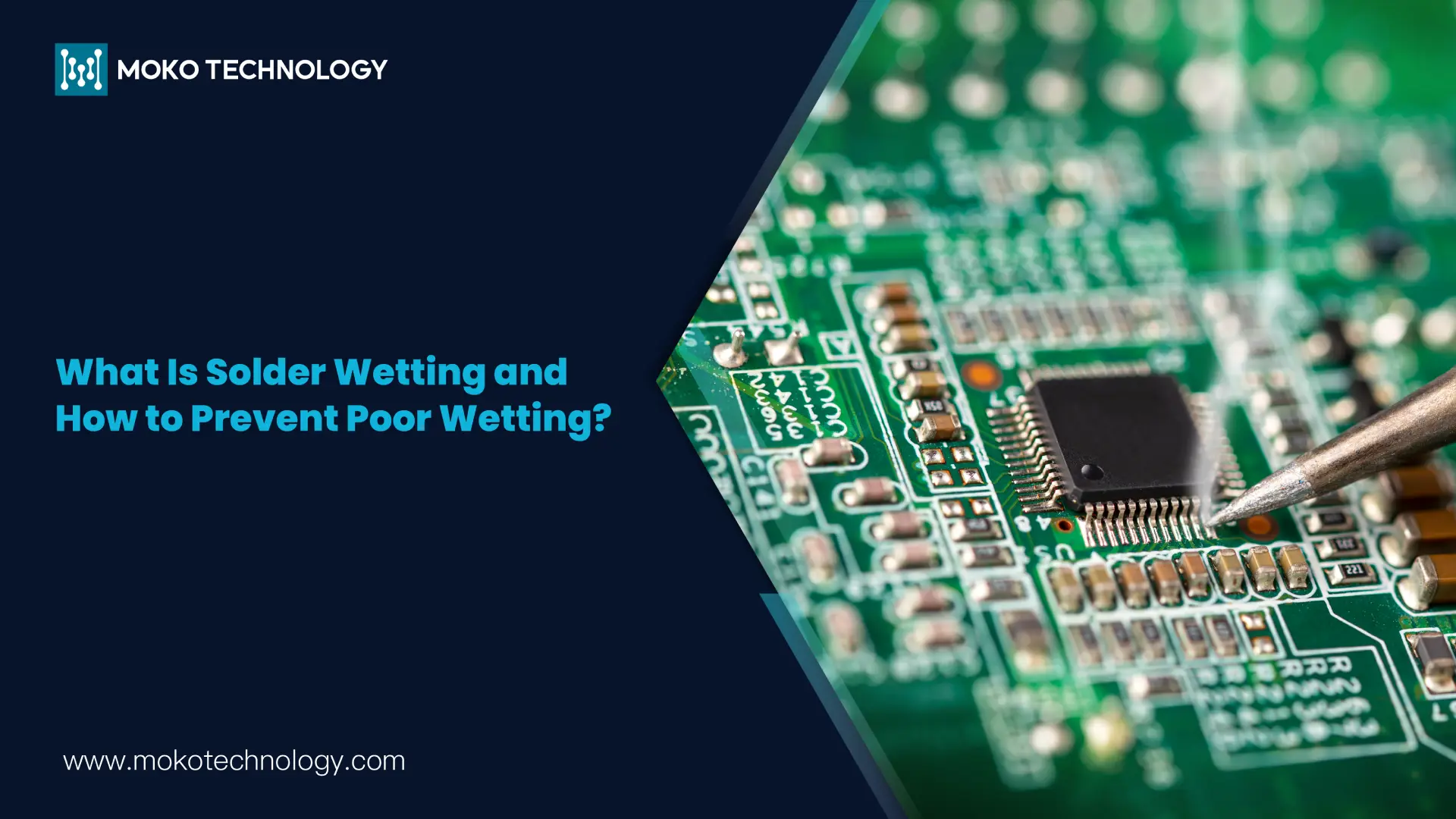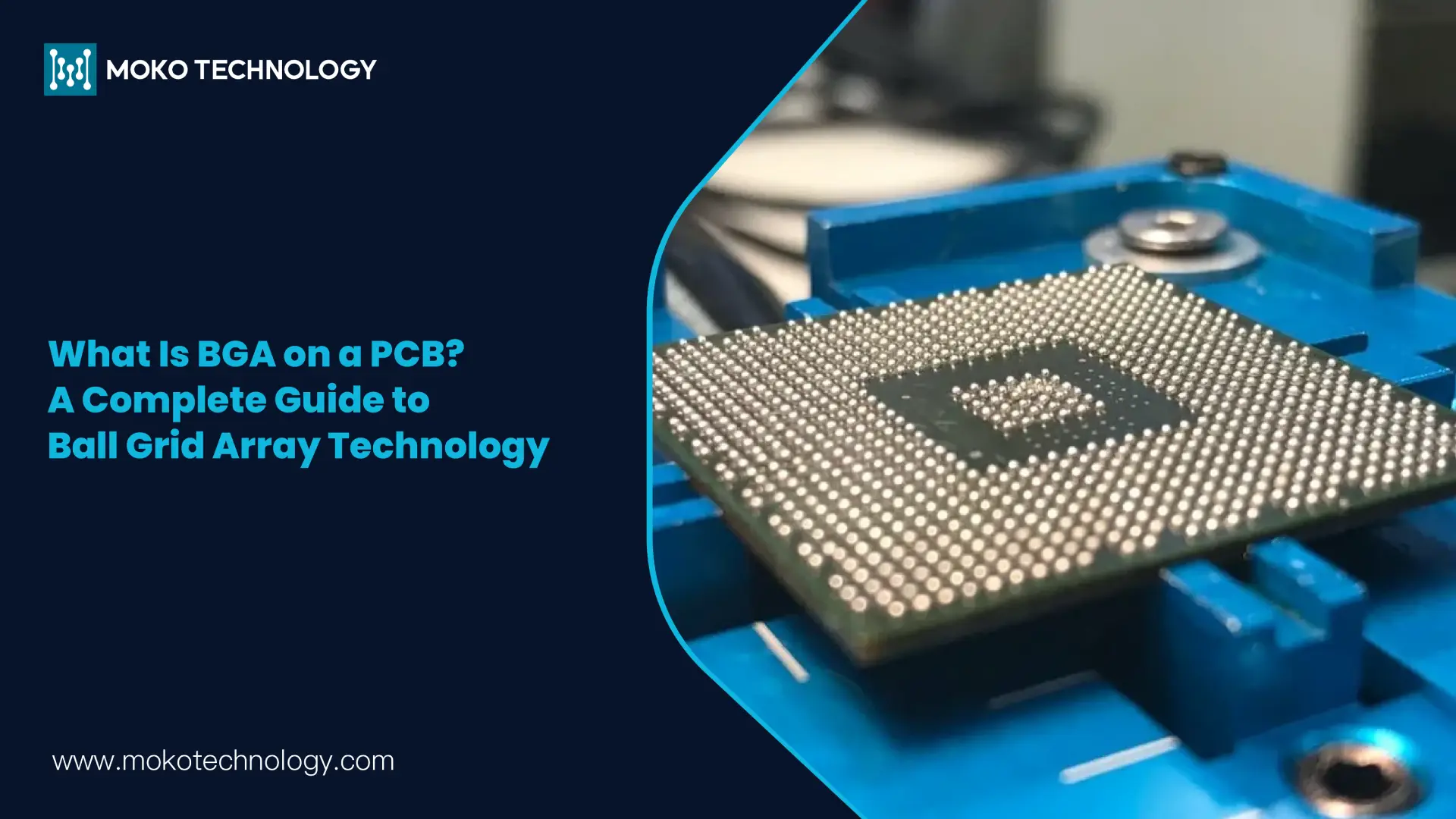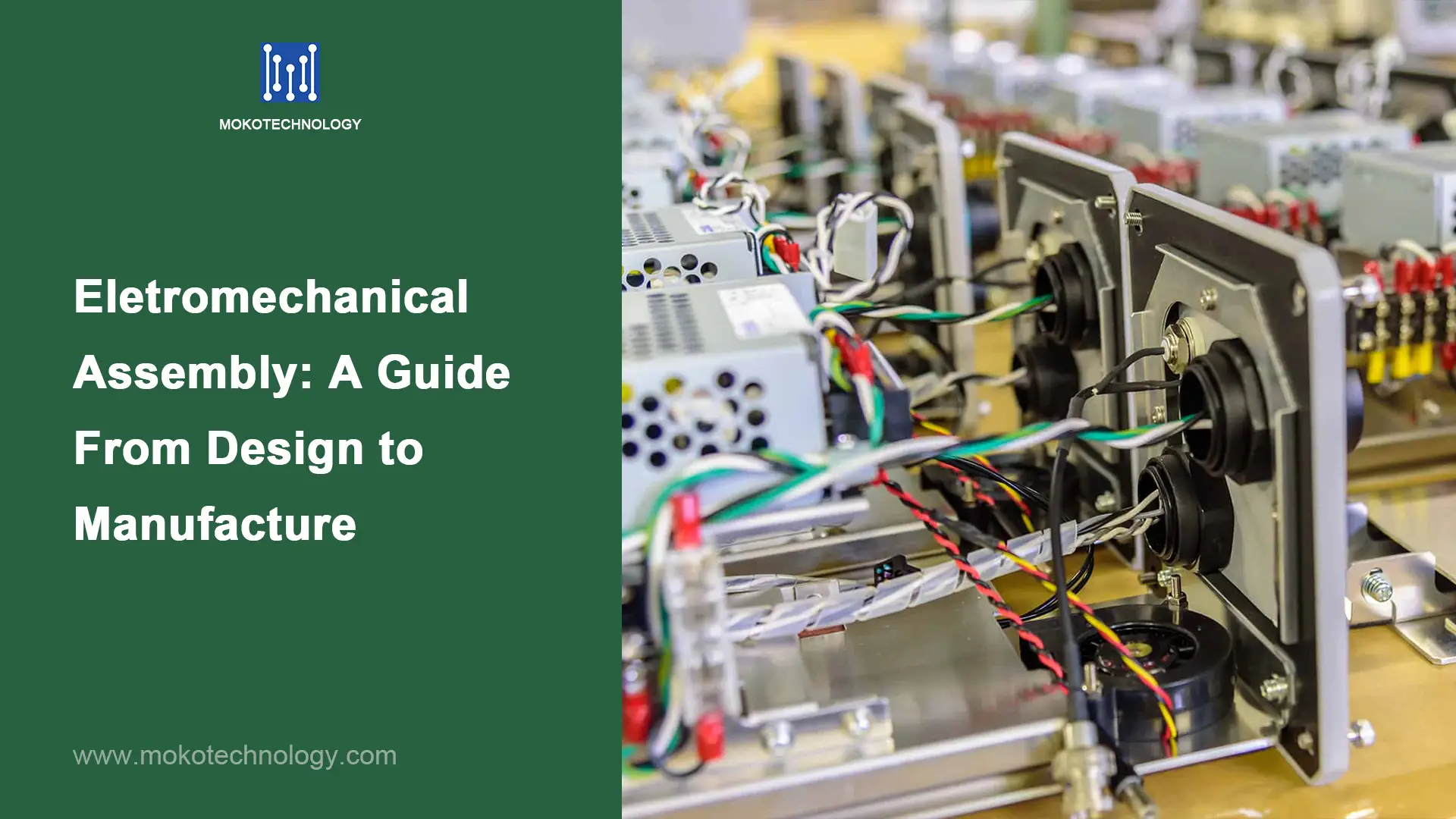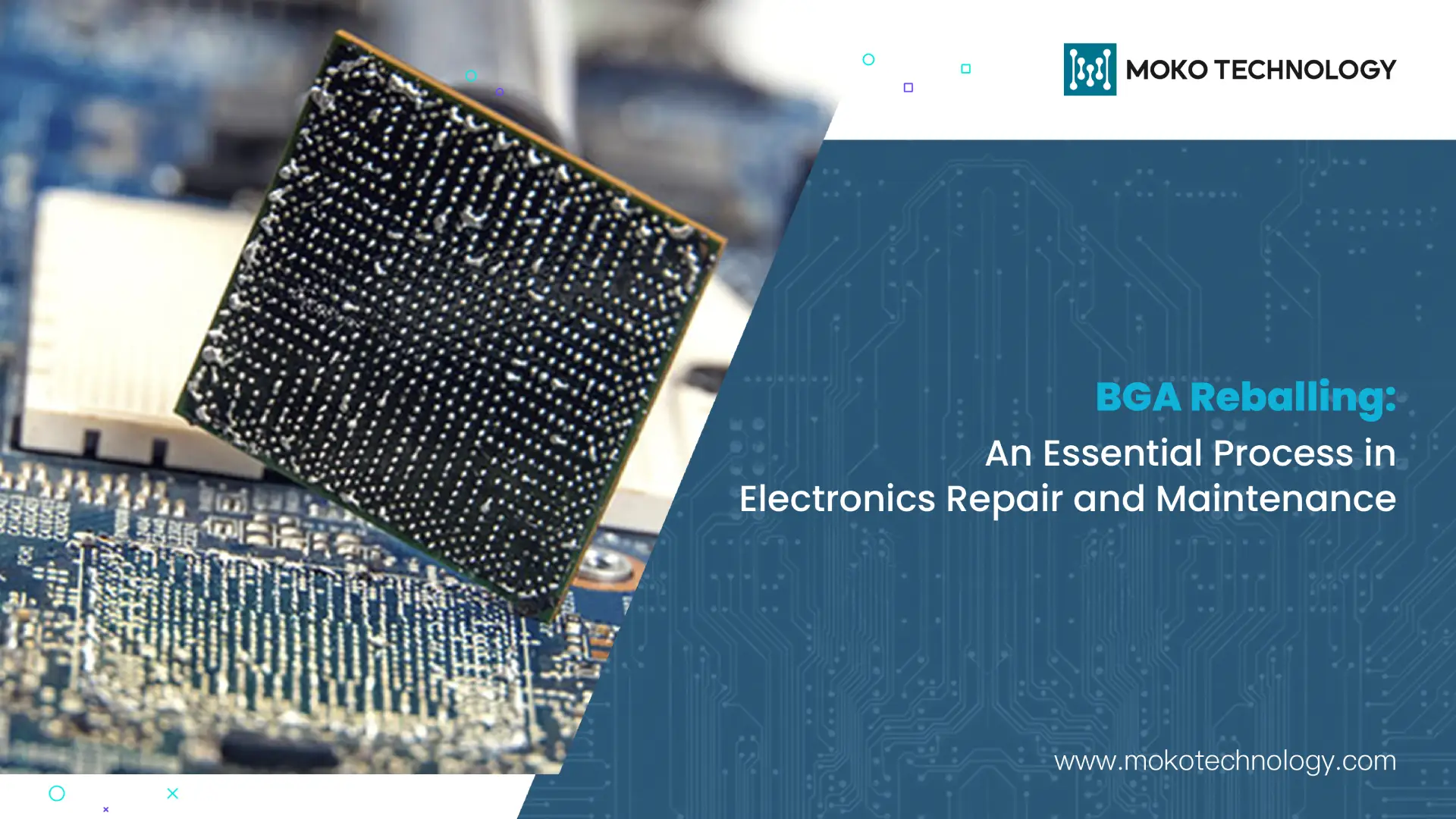Soldering is a cornerstone technique in electronics assembly, it’s used to connect electrical pieces and mechanically attach them to a PCB (Leiterplatte). A key step to this process is such a concept as “solder wetting.” In diesem Artikel, we’ll go over the basics of solder wetting, why it’s essential, what causes poor wetting, and how to prevent wetting issues so as to ensure reliable, long lived solder joints.
What Is Solder Wetting?
Solder wetting refers to a process in which solder is molten and spreading to the surface of PCB components. The liquid solder tends to move freely over the surface containing the solder and it forms a uniform shiny surface covering metallurgically bonded to the surface on cooling. If the wetting is good, we can see the solder is smooth and shiny. jedoch, the poor wetting is easy to spot with its rough, dull, granular appearance.
Why Proper Solder Wetting Is Important?
Achieving proper solder wetting is crucial for several reasons:
Elektrische Leitfähigkeit: Good wetting would help improve electrical conductivity as it can help lower signal loss risk and resistance.
Mechanische Festigkeit: Strong and durable bonds formed by good wetting are able to withstand thermal cycling as well as mechanical stress.
Zuverlässigkeit: Properly wetted joints will fail less than cracks, cold joints or intermittent connections.
Visuelle Inspektion: If the solder joint is well wetted, the solder joint is going to look smooth and shiny, and the quality control operator will be able to find defects easily.
Thermisches Management: Good wetting additionally offers superior heat dissipation, which is essential for temperature sensitive components.
3 Solder Wetting Issues You Should Know
While ideal solder wetting is the goal, various issues can occur during the soldering process:
-
Poor Wetting(Insufficient Wetting)
If the solder doesn’t spread as well as it should, the process is called poor wetting. The consequence is higher contact angles, more uneven solder distribution and a potential void or gap in the joint. A poorly wetted joint may function at the beginning, but it’s more likely to fail over time.
-
Non-WettingSoldering
Non-wetting is a type of soldering issue where the solder cannot make a bond with a PCB metal alloy. jedoch, if the terminals of electrical components, as well as the pads for the PCB cannot bond, attach and give a secure connection. The board material is left exposed on the surface. The solder also looks like lusterless or giant at the same time. Zusätzlich, direct voiding is also caused by non-wetting. This is a process of creating holes within joints of solder that may lack materials of solder.
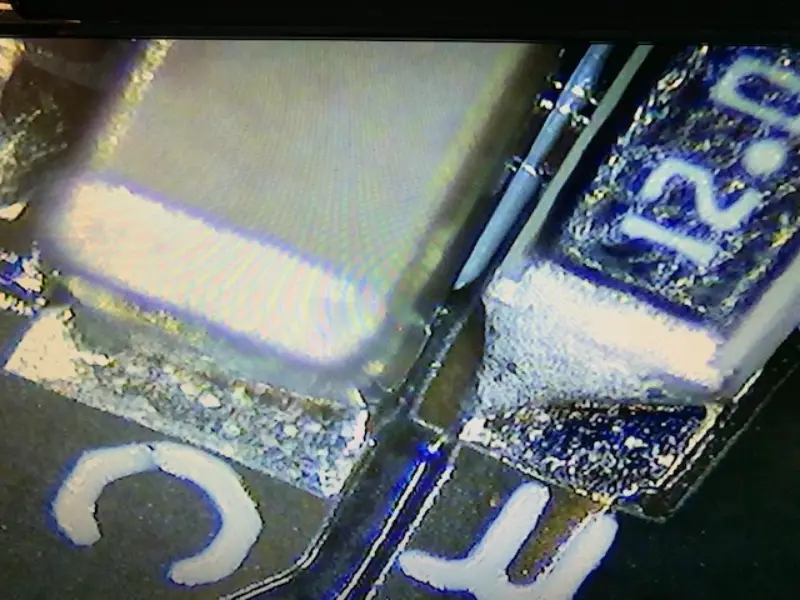
-
Dewetting
Dewetting process is a process where the solder pastes coat the terminals of the components and PCB-Pads, but they leave some of the parts. This leaves thin surfaced solder on metal alloys and thick and irregular clumps. The surface material of PCB is generally not exposed all the time. But when dewetting occurs, it usually affects the joint of solder and filet quality first.
Common Factors Causing Poor Solder Wetting
- Surface Contamination: If the surface of PCB board has contamination like dirt or flux residues, the solder cannot contact the metal surface directly. Als Ergebnis, the wetting is poor.
- Inadequate Flux: Use of the solder fluxinsufficiency is one of the leading causes of poor wetting soldering. The use of a sufficient amount of flux is able to remove oxides and wet the surface.
- Improper Soldering Temperature: Low temperatures will cause the solder not to flow as it should. If it’s too high, the rate of oxidation or destruction of components may result to.
- Incompatible Materials: For certain metals, some are harder to solder because their surface tension is not the same or metallurgical.
- Poor Surface Preparation: Rough or uneven surfaces can impede solder flow and wetting.
- Incorrect Soldering Technique: Incorrect soldering techniques such as insufficient preheating, improper application of solder, or soldering iron angle misuse would also cause the poor solder wetting.
- Aged or Oxidized Solder:The problem arises if the solder is old or kept improperly — its surface often develops a type of crust called oxides that prevent wetting.
How to Prevent Poor Solder Wetting?
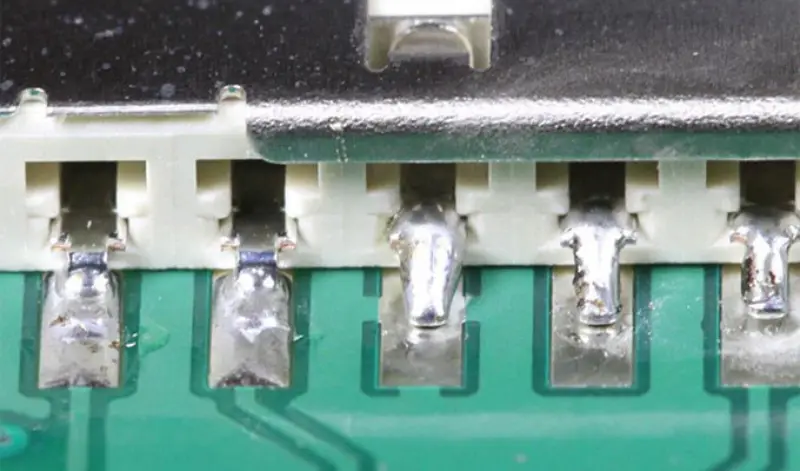
Soldering is all about detail and control, it has to be dealt with in a good wetting manner. Here are some key strategies to prevent wetting issues:
- Clean Your Surfaces
Zuerst, cleaning the PCB surface and components. And we can use a general solvent wipe to remove dirt, oils and any other contamination.
- Tin Tips With Solder
Soldering to a hot tip will prevent oxidation. Keep your tips tin it for iron to turn off and to keep your iron ready primed for proper wetting. You’ll save time and money on the extremely clunky process of constantly buying new tips.
- Use High-Activity Solder Paste
In such case, high activity solder pastes can provide better wetting and is beneficial also in case of complicated surface finish. Zusätzlich, high activity solder pastes will be helpful to avoid poor wetting during reflow.
- Preheat Your Soldering Iron
The soldering iron has to be preheated with the optimal temperature. The solder doesn’t melt completely at the wrong temperature and this leads to cold joints. Therefore its adhesion will not be reliable.
We do have a lot of strategies for soldering, but poor wetting of the solder is inevitable. Don’t worry—when the problem happens we can fix it despite that. Start over, just wait for the solder joints to cool, remove the flux, reheat the joint.
To Conclude
Proper solder wetting techniques determine how well an electronic device will be assembled and works. What’s really important is to know how this fundamental process works if you are working in electronics production. Technicians can see what causes wetting issues, and should use best practices to improve wetting on their soldering skills, and get better and more reliable results. It’s powerful knowledge that is essential to producing high quality electronic assemblies that meet industry standards and performance requirements.
